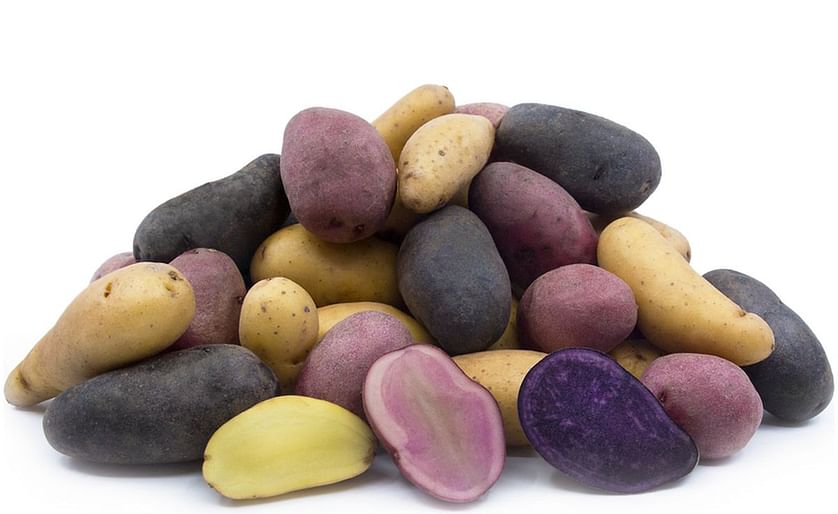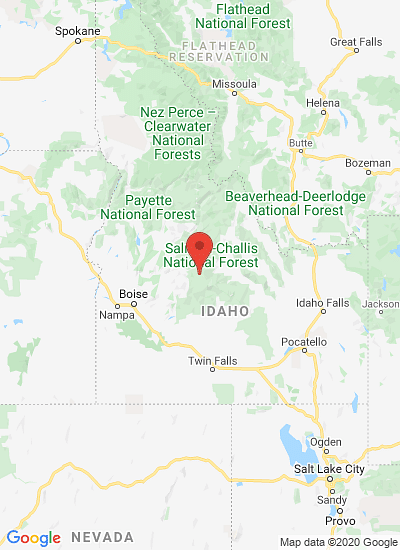The Idaho and Malheur County Oregon grow an increasing amount of non-traditional potato varieties, such as oblong, fingerling, and banana potatoes. Current regulations do not adequately address the unique varieties that are currently marketed.
US long Potato Imports impacted by Proposed Rule to modify Idaho Marketing Order

On the recommendation form the Idaho Eastern Oregon Potato Committee, USDA-AMS has proposed a rule to revise the varietal classifications that determine the size requirements for Irish potatoes grown in certain designated counties of Idaho, and Malheur County, Oregon.
The proposed modification would also apply to all imported long type Irish potatoes, as a result of section 8e of the Agricultural Marketing Agreement Act of 1937, according to the description in the Federal Registry.
A 60 day comment period is provided (until July 7) to allow interested persons to respond to this proposal.
Background
Committee members reported that the Idaho-Eastern Oregon potato industry has been producing and shipping an increasing number of non-traditional potato varieties, such as oblong, fingerling, and banana potatoes.
The current size requirements contained in the handling regulations do not adequately differentiate between the various types of potatoes to effectively regulate the unique varieties that are now being marketed from the production area.
Without a clear distinction, there exists the potential to inhibit orderly marketing of such potatoes by requiring them to adhere to size requirements that were never intended to be applied to that type or variety.
Designating potatoes as “round varieties” and “all other varieties” was appropriate when the regulations were initially established but potatoes from the production area are now segmented into two different market sectors, “Russet type potatoes” and “all other non-Russet varieties”.
The characteristics of each of these market sectors continues to need different minimum size requirements. However, with the current size requirement classifications in the handling regulations, some varieties of potatoes are being required to meet size requirements that do not match their natural characteristics or their intended market outlet.
For example, Russet varieties are primarily utilized as baked potatoes or are peeled and further prepared by the consumer as products such as french fries, potato salad, or mashed potatoes.
The Committee intends for the size requirements for these potatoes to be greater than for other varieties of potatoes and those size requirements match the likely utilization of such potatoes.
Non-Russet type potatoes are typically marketed fresh and are prepared and consumed whole.
These types, while predominantly round varieties, include unique varieties that could not be described as “round” but are also not comparable to Russet types. Requiring non-Russet type potatoes to meet size requirements intended for potatoes used for baking or french fries puts those potatoes at a marketing disadvantage.
The Committee believes that potato size is a significant consideration of potato buyers. Providing potato buyers with the sizes desired by their customers for the type of potato that is being marketed is important to promoting potato sales. The size requirements intended to facilitate orderly marketing should not unintentionally inhibit a market segment, even if that segment is a minor one.
Modifying the size requirement classifications to meet the intent of the Committee would help facilitate the growth of the emerging market for unique potato varieties. This proposed change is expected to improve the marketing of Idaho-Eastern Oregon potatoes and enhance overall returns to handlers and producers.
This proposed rule would relax the current handling regulations for non-round potatoes that are also not Russet type. Such potatoes would be subject to the smaller size requirements that are currently applied to round varieties.
The Committee believes that, while these potatoes represent a small market segment relative to the total output from the production area, the market is expected to grow and the Order's handling regulations should be responsive to it.
Impact on US potato imports:
Minimum grade, size, quality, and maturity requirements for potatoes imported into the United States are currently in effect under § 980.1. Section 980.1(b)(3) stipulates that, through the entire year, the grade, size, quality, and maturity requirements of the Order applicable to potatoes of all long types shall be the respective grade, size, quality, and maturity requirements for imported potatoes of all long types. Therefore, this proposed action would relax the minimum size requirements for imports of non-round U.S. No. 2 grade long type potatoes, other than Russet types, accordingly.
This rule would also allow potato importers to respond to the changing demands of domestic consumers. The domestic market's increasing preference for unique potato varieties applies to imported potatoes as well as to domestically produced potatoes. In addition, the higher prices that the unique potatoes are expected to command would also apply to imported product. Thus, importers are expected to benefit along with domestic producers and handlers by increased sales of U.S. No. 2 grade potatoes and increased total revenue.
The proposed modification would also apply to all imported long type Irish potatoes, as a result of section 8e of the Agricultural Marketing Agreement Act of 1937, according to the description in the Federal Registry.
A 60 day comment period is provided (until July 7) to allow interested persons to respond to this proposal.
Background
Committee members reported that the Idaho-Eastern Oregon potato industry has been producing and shipping an increasing number of non-traditional potato varieties, such as oblong, fingerling, and banana potatoes.
The current size requirements contained in the handling regulations do not adequately differentiate between the various types of potatoes to effectively regulate the unique varieties that are now being marketed from the production area.
Without a clear distinction, there exists the potential to inhibit orderly marketing of such potatoes by requiring them to adhere to size requirements that were never intended to be applied to that type or variety.
Designating potatoes as “round varieties” and “all other varieties” was appropriate when the regulations were initially established but potatoes from the production area are now segmented into two different market sectors, “Russet type potatoes” and “all other non-Russet varieties”.
The characteristics of each of these market sectors continues to need different minimum size requirements. However, with the current size requirement classifications in the handling regulations, some varieties of potatoes are being required to meet size requirements that do not match their natural characteristics or their intended market outlet.
For example, Russet varieties are primarily utilized as baked potatoes or are peeled and further prepared by the consumer as products such as french fries, potato salad, or mashed potatoes.
The Committee intends for the size requirements for these potatoes to be greater than for other varieties of potatoes and those size requirements match the likely utilization of such potatoes.
Non-Russet type potatoes are typically marketed fresh and are prepared and consumed whole.
These types, while predominantly round varieties, include unique varieties that could not be described as “round” but are also not comparable to Russet types. Requiring non-Russet type potatoes to meet size requirements intended for potatoes used for baking or french fries puts those potatoes at a marketing disadvantage.
The Committee believes that potato size is a significant consideration of potato buyers. Providing potato buyers with the sizes desired by their customers for the type of potato that is being marketed is important to promoting potato sales. The size requirements intended to facilitate orderly marketing should not unintentionally inhibit a market segment, even if that segment is a minor one.
Modifying the size requirement classifications to meet the intent of the Committee would help facilitate the growth of the emerging market for unique potato varieties. This proposed change is expected to improve the marketing of Idaho-Eastern Oregon potatoes and enhance overall returns to handlers and producers.
This proposed rule would relax the current handling regulations for non-round potatoes that are also not Russet type. Such potatoes would be subject to the smaller size requirements that are currently applied to round varieties.
The Committee believes that, while these potatoes represent a small market segment relative to the total output from the production area, the market is expected to grow and the Order's handling regulations should be responsive to it.
Impact on US potato imports:
Minimum grade, size, quality, and maturity requirements for potatoes imported into the United States are currently in effect under § 980.1. Section 980.1(b)(3) stipulates that, through the entire year, the grade, size, quality, and maturity requirements of the Order applicable to potatoes of all long types shall be the respective grade, size, quality, and maturity requirements for imported potatoes of all long types. Therefore, this proposed action would relax the minimum size requirements for imports of non-round U.S. No. 2 grade long type potatoes, other than Russet types, accordingly.
This rule would also allow potato importers to respond to the changing demands of domestic consumers. The domestic market's increasing preference for unique potato varieties applies to imported potatoes as well as to domestically produced potatoes. In addition, the higher prices that the unique potatoes are expected to command would also apply to imported product. Thus, importers are expected to benefit along with domestic producers and handlers by increased sales of U.S. No. 2 grade potatoes and increased total revenue.


